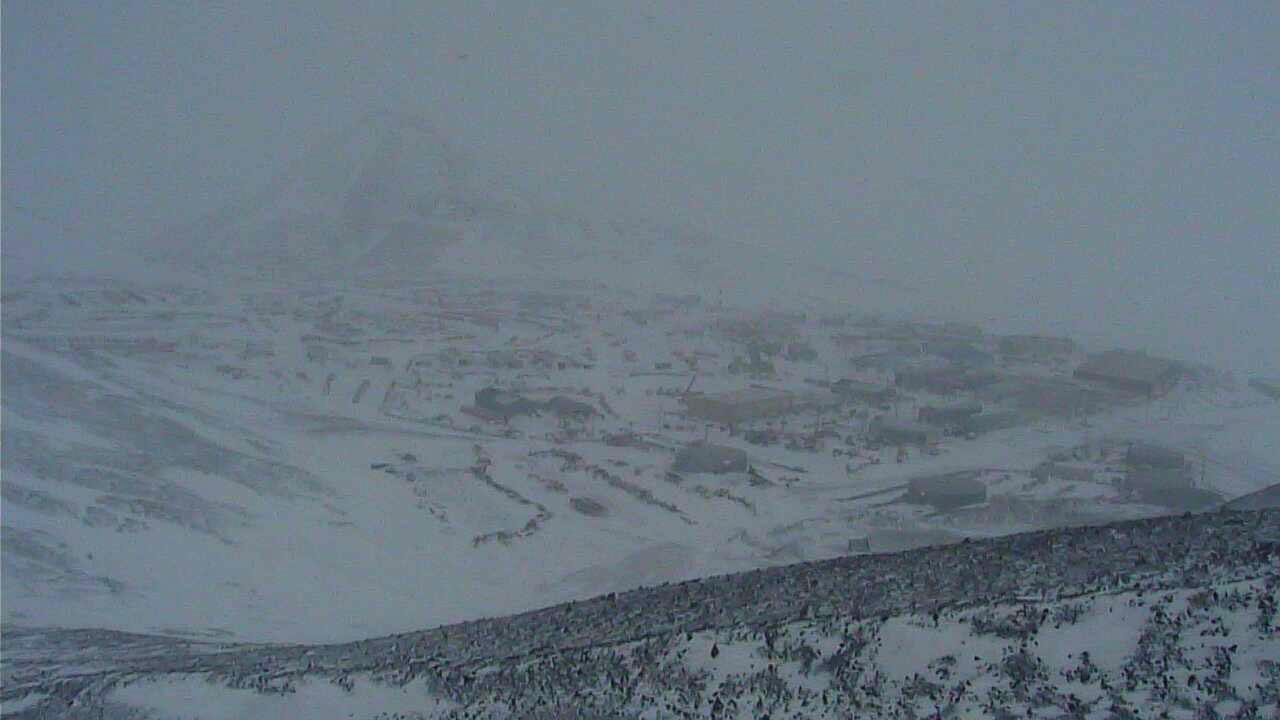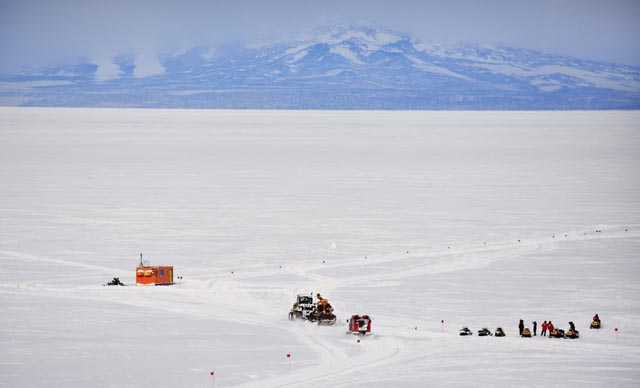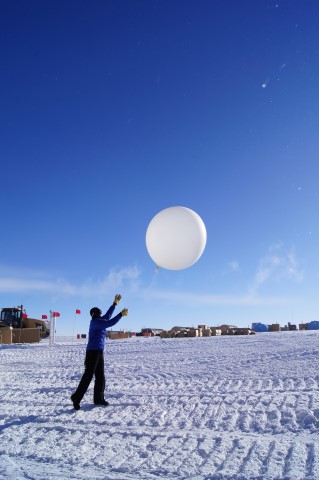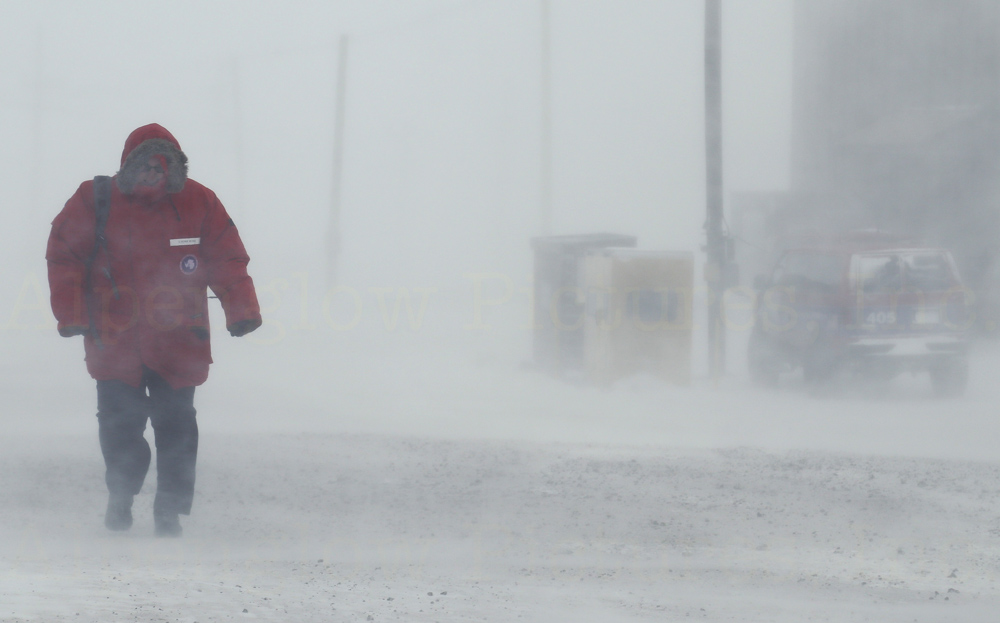WhiteoutBlustery, baleful weather at McMurdo impedes progress through much of OctoberPosted November 6, 2014
“I’ve never seen an October like this.” That’s been the refrain for much of the first month of the summer field season at McMurdo Station by most people who have spent some time in the U.S. Antarctic Program. There have been few pauses between a string of relentless storms that brought strong winds and snow to the Ross Island region since the first planes of summer arrived on Sept. 30. Most of the deep-field research funded and supported by the National Science Foundation takes place between October and February, much of it based out of McMurdo Station. Twice during the month, flights from Christchurch, New Zealand, were delayed by at least a week, forcing round-the-clock flight operations at the end of October to help the station catch up on receiving cargo and passengers stranded in the South Island’s largest city. The weather also postponed work by some research teams that required transportation by helicopter to the nearby McMurdo Dry Valleys. 
Photo Credit: McMurdo web cam
A view of McMurdo Station on Oct. 21 from a web camera at Arrival Heights.
By Oct. 26, there had been 22 days with some form of precipitation and 19 days of blowing snow in the region. The result: As of Oct. 22, about 40 percent of October had been designated by what officials call instrument flight rules (IFR) or below, meaning that conditions required pilots to navigate primarily by instrumentation. IFR goes into effect when cloud ceilings drop to less than 1,500 feet and/or with less than three miles of visibility. For comparison, 40 percent is almost twice as many IFR days as were recorded for “bad months” in McMurdo’s recent history. The station had experienced about 24 percent IFR in November 2000 and October 2003, according to Art Cayette, Meteorology manager. “If the storms keep piling up – at least in the short-term history – we can be looking at the worst October that we’ve ever had, probably the worst collective month we’ve ever had in dealing with weather here.” The culprit: A stubborn high pressure system sitting off the Weddell Sea has been redirecting the continent’s normal storm path, like throwing a switch and sending a train down a different track. “McMurdo is right in line with the storm track,” Cayette said. “We’re getting hit by many more storms than we would normally get.” 
Photo Credit: Peter Rejcek
A break in the weather offers an opportunity to get work done on the sea ice, where whiteout conditions were the norm during the first three weeks of October.
Storm systems generally rotate clockwise around the continent, with a low-pressure system occasionally peeling off the merry-go-round and heading inland. But the high-pressure system has forced the storm track toward the Ross Sea region where McMurdo Station is located. The change in weather may have a relationship with the phenomenon known as the El Niño and Southern Oscillation, or ENSO for short. El Niño refers to an anomalous change in the sea-surface temperature off the equatorial west coast of South America that accompanies large-scale air pressure changes of the overlying atmosphere, called the Southern Oscillation. “One feeds the other,” Cayette said, adding that there are indications that El Nino is weakening, which should stop influencing the storm track around Antarctica. “We’ll go back to a regular, normal flow.” Weather is hard to predict anywhere, and it is notoriously fickle in the Antarctic. A big part of the problem is that data collection points are few and far between on a continent the size of the United States and Mexico combined. There is a small network of autonomous weather stations scattered across Antarctica. Weather balloons launched from research stations also provide data that can be fed into forecast models. 
Photo Credit: Elaine Hood/Antarctic Photo Library
South Pole meteorologist Philip Marzette launches a weather balloon at the South Pole, about 850 miles from McMurdo Station.
But Cayette noted, “The next closest location for launching weather balloons is a continent away.” However, the Antarctic Mesoscale Prediction System (AMPS) used by meteorologists to forecast the weather is becoming ever more sophisticated, using satellite imagery and other data to produce reliable predictions. The model has been doing a good job responding the weather system that has been plaguing McMurdo, according to Cayette. “Things have been reacting very well to this type of a system,” he said. Despite the poor conditions that have kept aircraft grounded and scientists from reaching field sites, few significant weather records have been broken. Wind gusts have reached a reported 59 knots, but far short of the record 85 knots recorded in 1977. Snowfall through Oct. 27 had reached 30.8 inches. In October 1971, the station received about 28 inches of snow in one 24-hour period. Cayette noted that the early explorers encountered conditions that were far more challenging. Apsley Cherry-Garrard, a member of Scott’s second expedition to the Antarctic, famously wrote about a journey to Cape Crozier on Ross Island during the winter to collect penguin eggs for a research project. Three men nearly died, pinned down by a blizzard, their tent ripped away in the storm. “They couldn’t walk a few feet. We’re talking about flying. If it’s so bad that you can’t walk for a month, that’s much worse than anything we’ve seen,” Cayette said. “In other words, it can get worse.” [See related article — Stormy weather: Heavy snowfall, strong winds hit McMurdo in August and September] |



For USAP Participants |
For The Public |
For Researchers and EducatorsContact UsU.S. National Science FoundationOffice of Polar Programs Geosciences Directorate 2415 Eisenhower Avenue, Suite W7100 Alexandria, VA 22314 Sign up for the NSF Office of Polar Programs newsletter and events. Feedback Form |


